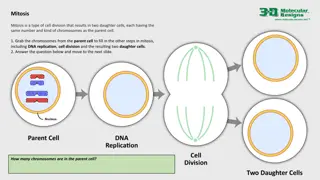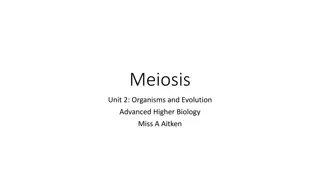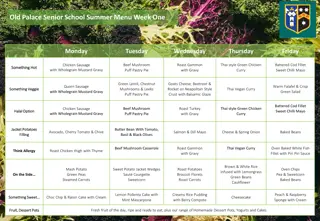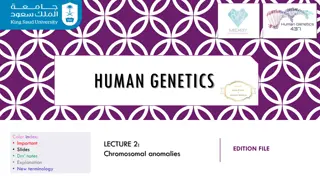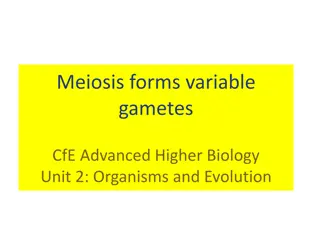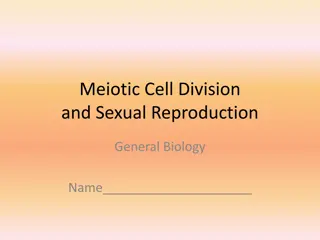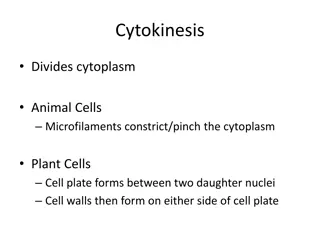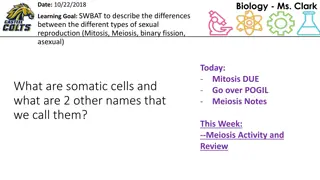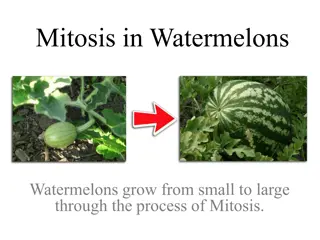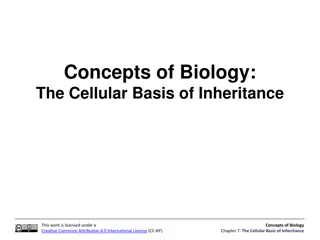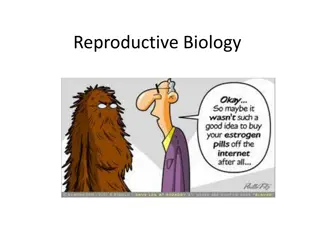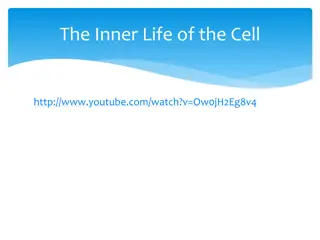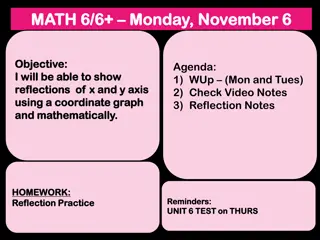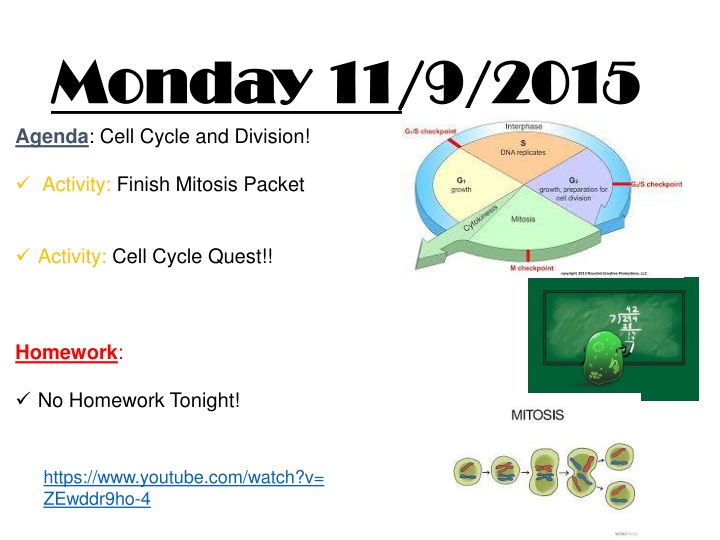
Cell Cycle: Mitosis, Meiosis, and Genetic Variation
Explore the intricate processes of cell division through mitosis and meiosis, understanding the significance of genetic variation. Dive into the world of germ cells and chromosome arrangements, gaining insights into the complexities of DNA replication and nucleus division. Unravel the terminologies of karyotype, autosomes, and sex chromosomes, ultimately discovering the essence of haploid and diploid sets in the realm of cellular biology.
Download Presentation

Please find below an Image/Link to download the presentation.
The content on the website is provided AS IS for your information and personal use only. It may not be sold, licensed, or shared on other websites without obtaining consent from the author. If you encounter any issues during the download, it is possible that the publisher has removed the file from their server.
You are allowed to download the files provided on this website for personal or commercial use, subject to the condition that they are used lawfully. All files are the property of their respective owners.
The content on the website is provided AS IS for your information and personal use only. It may not be sold, licensed, or shared on other websites without obtaining consent from the author.
E N D
Presentation Transcript
Monday 11/9/2015 Monday 11/9/2015 Agenda: Cell Cycle and Division! Activity: Finish Mitosis Packet Activity: Cell Cycle Quest!! Homework: No Homework Tonight! https://www.youtube.com/watch?v= ZEwddr9ho-4
Tuesday 11/10/2015 Tuesday 11/10/2015 Agenda: Cell Cycle and Division! Activity: Meiosis Reading Guide Homework: Meiosis Reading Guide due Thursday/Friday 11/12-11/13/2015 for 40 Points NO SCHOOL ON WEDNESDAY!
Meiosis Reading Guide You are to annotate each paragraph 4 times (there are 4 total paragraphs) Answer questions 1-18 on the worksheet This is due TODAY for 40 Points!!
Thursday/Friday Thursday/Friday 11/12 11/12- -11/13/2015 11/13/2015 Agenda: Cell Cycle and Division! Notes: Meiosis and Meiosis Terminology Activity: Meiosis Foldable Activity: Amoeba Sisters with Worksheet Homework: No Homework!
Q2 WK3 D2 MEIOSIS
Meiosis Meiosis Meiosis is thetype of cell division by which germ cells (eggs and sperm) are produced. One parent cell produces four four daughter cells. Daughter cells have half the number of chromosomes found in the parent cell
Meiosis Meiosis During meiosis, DNA replicates once, but the nucleus divides twice. There are 2 parts to Meiosis: 1. Meiosis 1 2. Meiosis 2 The 4 new daughter cells have variation of the parent DNA; this is genetic variation
Meiosis Terminology Karyotype: Arranging of chromosomes from largest to smallest; pairing up the homologous chromosomes Autosomes: All non-sex chromosomes; (#1-22 for humans) Sex Chromosomes: Chromosomes that determine the sex of an organism (#23 for humans) Set (n): # of different chromosomes. REMEMBER: Haploid = 1set, Diploid= 2 sets
Karyotype of a human Is this person male or female? http://www.biologyjunction.com/karyotype_female.jpg How many sex chromosomes are present? How many autosome chromosomes are present? How many homologous pairs of chromosomes are present?
Background on Meiosis Meiosis involves 2 divisions of the nucleus Meiosis 1 & Meiosis 2 Meiosis STARTS with HOMOLOGOUS CHROMOSOMES Homologous Chromosomes: They are similar in shape, size & genetic content
Meiosis 1: 1 Meiosis 1: 1st st Division of Meiosis Division of Meiosis Prophase I: Chromosomes condense, nuclear envelope breaks, homologous chromosomes pair at ends. ***Cross-Over: Part of chromatid on 1 homologous chromosome exchanges with the other chromosome***
Meiosis 1: 1 Meiosis 1: 1st st Division of Meiosis Division of Meiosis Metaphase I: Homologous chromosomes move to center of the cell by the spindle fibers. Anaphase I: Homologous chromosomes separate and move to opposite poles, BUT sister chromatids stay together. A set of chromosomes moves to each pole Telophase I: The spindle fibers disappear, cells begin to cleave; still, two sets of chromosomes are at opposite poles
Meiosis 1 http://www.t21world.egytefl.org/image%20of%20gallery/1%20(15).gif
End of Meiosis I http://www.phschool.com/science/biology_place/labbench/lab3/images/stages2.gif Once Meiosis I is complete, cytokinesis occurs and the cell splits into 2 haploid cells. These 2 cells enter Meiosis II
Meiosis II Meiosis II Prophase II: A new spindle forms around the chromosomes (no longer HOMOLOGOUS CHROMOSOMES) Metaphase II: Chromosomes line up at center & spindle fibers attach to centromere Anaphase II: Centromeres split, chromatids move to opposite poles of cell Telophase II: Nuclear envelope forms around each set of chromosomes & spindles retracts, cell begins cytokinesis
Result of Meiosis II Result of Meiosis II 4 HAPLOID cells form as a result of Meiosis II Haploid = cell containing 1 set of chromosomes
Meiosis II: Meiosis II: 2nd division of Meiosis
Prophase II Prophase II http://everyschool.org/u/logan/cellreproductionx/rogersa/research/meiosis.html
Metaphase II Metaphase II http://everyschool.org/u/logan/cellreproductionx/rogersa/research/meiosis.html
Telophase II Telophase II http://everyschool.org/u/logan/cellreproductionx/rogersa/research/meiosis.html
Differences in Mitosis & Differences in Mitosis & Meiosis Meiosis Mitosis Asexual Cell divides once Two daughter cells form Genetic informationS is identical Meiosis Sexual Cell divides twice Four haploid daughter cells form Genetic information is different

